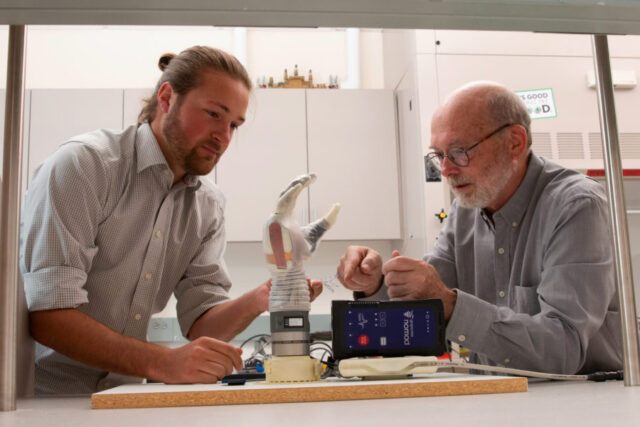
Research on robotic prostheses is emerging all the time, technological advances in this area are growing, but still, there is a difficult obstacle to overcome: the sense of touch.
Among other things, this sense enables us to control our grip strength - which is vitally important when it comes to having control in dealing with fragile objects.
Recently, researchers at the University of Utah have developed a robotic arm that can move with their thinking and feel the touch.
The "LUKE Arm" (named after the robotic hand Luke Skywalker received in "The Empire Strikes Back") to mimic the human way the hand feels objects by sending the appropriate signals to the brain.
The arm
The prototype has been in development for about 15 years and is mainly made up of metal motors and parts with a transparent silicone “skin” on the hand. It is powered by an external battery and connected to a computer.

How is this possible?
The University of Utah team has developed a system that allows the prosthetic arm to touch the user's nerves, which are like biological wires that send signals to the arm to move. He does this thanks to an invention of U biomedical engineering by renowned professor Richard A. Normann called the Utah Slanted Electrode Array. The matrix is a bundle of 100 microelectrodes and wires that are implanted into the amputee's nerves in the forearm and connected to a computer outside the body. The array interprets the signals from the remaining arm nerves, and the computer translates them into digital signals that tell the arm to move.
The prosthetic arm has sensors in its hand that send signals to the nerves through the matrix to mimic the feeling that the hand has when catching something. Equally important is how these signals are sent. It involves understanding how your brain handles information transitions when it first touches something. At the first contact of an object, an explosion of impulses goes up the nerves to the brain and then subsides. Recreating this was a breakthrough.
Clinical tests
Keven Walgamott lost his left hand and arm in an electrical accident 17 years ago. He tested a high-tech prosthetic arm prototype. Not only could his fingers move with his thoughts, he “felt” the egg well enough that his brain could tell the prosthetic hand not to squeeze too tightly.
That's amazing, now an amputee wearing the prosthetic arm can feel the touch of something soft or hard, better understand how to pick it up and perform delicate tasks that would be impossible with a standard metal hook prosthesis.
“It almost brought me to tears,” Walgamott says of using LUKE Arm for the first time during clinical trials in 2017. “It was really amazing. I never thought I'd be able to feel that hand again. ”
Future Research
In addition to creating a prototype LUKE Arm with a sense of touch, the team is already developing a version that is fully portable and doesn't need to be connected to an out-of-body computer. Instead, everything would be wirelessly connected, giving the user complete freedom.
The scientific article was published in Science Robotics .
SOURCE / The University of Utah





No comments:
Post a Comment